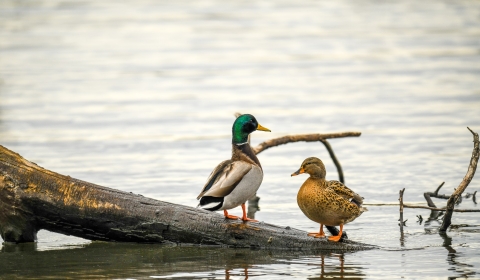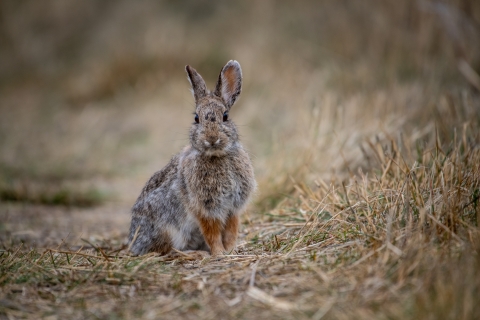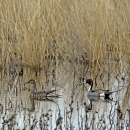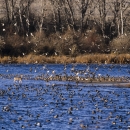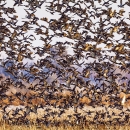About Us
McNary National Wildlife Refuge is a welcomed respite for migratory birds, native plants and human visitors alike. Extending along the east bank of the Columbia River in southeastern Washington, from the confluence of the Snake River to the mouth of the Walla Walla River, and downstream into Oregon, McNary NWR is located in rural Burbank, but very close to the rapid development of the Tri-Cities (Kennewick, Pasco and Richland). In fact, the refuge meets the definition of an "urban refuge."
Established in 1956, McNary NWR was created to replace wildlife habitat lost to construction of the McNary Dam downstream. The 15,000 acres of sloughs, ponds, streams and islands— riparian riparian
Definition of riparian habitat or riparian areas.
Learn more about riparian and wetland habitat—as well as upland shrub-steppe and cliff-talus habitat are important to migratory waterfowl, shorebirds and songbirds. Few areas in North America support such dense concentrations of waterfowl; more than half the mallards in the Pacific Flyway overwinter at some time in this portion of the Columbia River Basin.
That said, McNary supports excellent populations of raptors, a host of mammal species, and as many reptiles and amphibians as can be found anywhere in the Columbia Basin.
Our Mission
McNary National Wildlife Refuge was original established in July of 1955 under the authority of the Fish and Wildlife Coordination Act it’s Mission (Purposes) are derived from this law and expanded upon through various public laws, plans, and agreements.
Refuge Purposes:
- “conservation of wildlife”
- “for the conservation, maintenance, and management of wildlife, resources thereof, and its habitat thereon.”
- “have particular value in carrying out the National Migratory Bird Management Program.”
- “made available for development, conservation and management of wildlife resources”
- “value relating to the conservation of fish life, waterfowl, and upland game birds”
- “low-density recreation activities such as hiking, primitive camping, hunting, fishing, nature study, nature photography, bird watching, and other related activities.”

